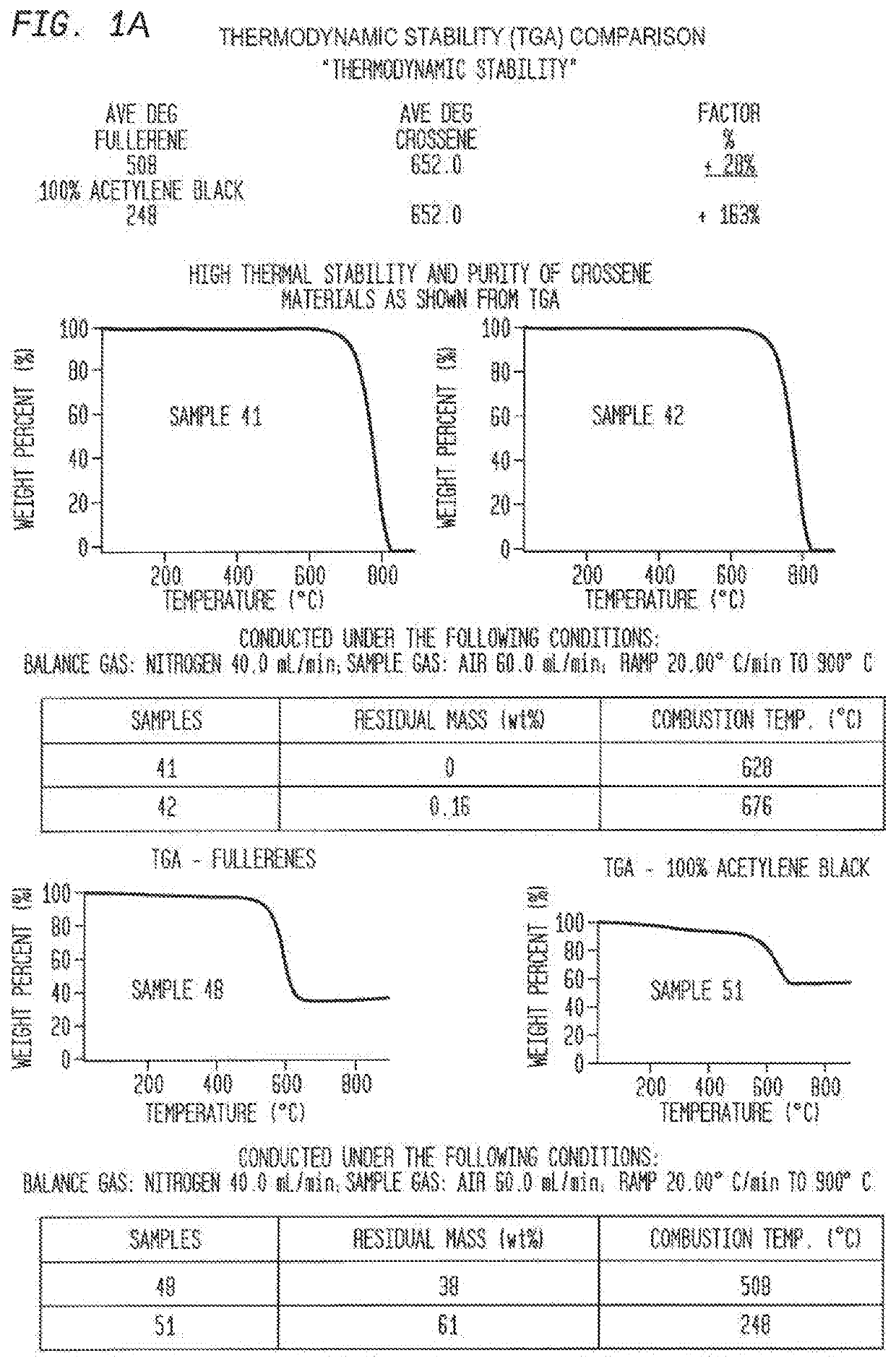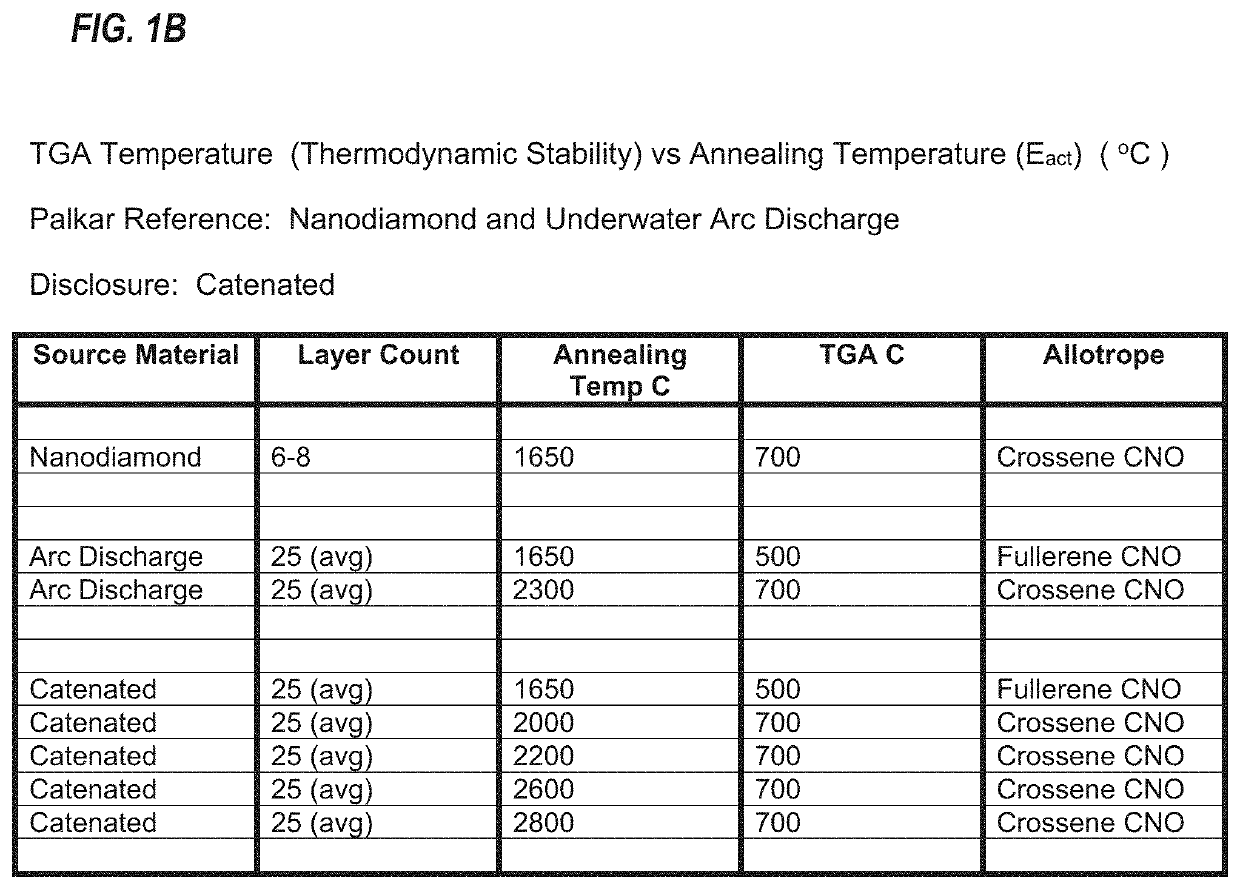Surface area and porosity for catenated carbon nano-onions (CNOS)
a technology which is applied in the field of surface area and porosity of catenated carbon nanoonions (cnos), can solve the problems of limit the yield and consistency of synthetic procedures
- Summary
- Abstract
- Description
- Claims
- Application Information
AI Technical Summary
Benefits of technology
Problems solved by technology
Method used
Image
Examples
Embodiment Construction
[0037]A new allotrope of multilayered nanocarbon materials is herein introduced with an advanced bonding system of superior electron delocalization. Hitherto in the literature, the fullerene allotrope has been understood to encompass generally all trigonally bonded carbon systems of a curved nature and some would lump the planar nanocarbon graphene carbon materials into the fullerene category as well. Of particular focus of this disclosure is nanocarbon onions (NCOs) or carbon nano-onions (CNOs) or onion-like carbons (OLCs) wherein the systems possess a preponderance of generally complete continuous or cyclic layers without edges though some carbon nanotubes or graphenes with a high degree of multiple layers might harbor interest in regards to their possible relationship to this new allotrope, particularly if their edges could convert to a continuous cyclic system. The imprecise characterization of most all nanocarbons as being part of the fullerene family along with limitations of ...
PUM
| Property | Measurement | Unit |
|---|---|---|
| temperatures | aaaaa | aaaaa |
| melting point | aaaaa | aaaaa |
| melting point | aaaaa | aaaaa |
Abstract
Description
Claims
Application Information
 Login to View More
Login to View More - R&D
- Intellectual Property
- Life Sciences
- Materials
- Tech Scout
- Unparalleled Data Quality
- Higher Quality Content
- 60% Fewer Hallucinations
Browse by: Latest US Patents, China's latest patents, Technical Efficacy Thesaurus, Application Domain, Technology Topic, Popular Technical Reports.
© 2025 PatSnap. All rights reserved.Legal|Privacy policy|Modern Slavery Act Transparency Statement|Sitemap|About US| Contact US: help@patsnap.com



